Rakennustuoteteollisuus RTT
Toimialayhteisö:
Rakennustuoteteollisuus RTT
Komitea: CEN/TC 127
(Fire safety in buildings)
Alkuperä: CEN
Määräpäivä: 2026-01-22
This document specifies the procedure for classification of construction products and building elements using data from fire resistance and/or smoke leakage/control tests and/or mechanical tests which are within the direct field of application of the relevant test method. Classification on the basis of extended application of test results is also included in the scope of this document.
This document deals with:
a) loadbearing elements without a fire separating function:
- walls;
- floors;
- roofs;
- beams;
- columns;
- balconies;
- walkways;
- stairs.
b) loadbearing elements with a fire separating function, with or without glazing, services and fixtures:
- walls;
- floors;
- roofs;
- raised floors.
c) products and systems for protecting elements or parts of the works:
- ceilings with no independent fire resistance;
- fire protective coatings, claddings and screens;
d) non-loadbearing elements or parts of works, with or without glazing, services and fixtures:
- partitions;
- facades (curtain walls) and external walls;
- ceilings with independent fire resistance;
- raised floors;
- fire resisting doorsets, shutter assemblies and openable windows and their closing devices;
- smoke control doorsets and shutter assemblies and their closing devices;
- conveyor systems and their closures;
- penetration seals;
- linear joint seals;
- combined penetration seals;
- service ducts and shafts;
- air transfer grilles.
- chimneys.
e) wall and ceiling coverings with fire protection ability.
f) lift landing doors which are tested according to EN 81-58 are excluded from this document. Lift landing doors which are tested in accordance with EN 1634-1 are classified in accordance with 7.5.5.
Relevant test methods which have been prepared for these construction products are listed in Clauses 2 and 7.
Toimialayhteisö:
Rakennustuoteteollisuus RTT
Komitea: CEN/TC 229
(Precast concrete products)
Alkuperä: CEN
Määräpäivä: 2026-01-29
This document provides specifications for the production of unreinforced, reinforced and prestressed precast concrete products protected from adverse weather conditions during production, and made of compact light-, normal- and heavyweight concrete according to EN 206 with no appreciable amount of entrapped air other than entrained air. Concrete containing fibres for other than mechanical properties (steel, polymer or other fibres) is also covered.
This document also covers clay, EPS, and lightweight formwork blocks for beam-and-blocks floor systems.
It does not cover precast reinforced components of lightweight aggregate concrete with open structure nor glassfibre reinforced concrete.
It can also be used to specify products for which there is no standard.
Toimialayhteisö:
Rakennustuoteteollisuus RTT
Komitea: ISO/TC 92/SC 4
(Fire safety engineering)
Alkuperä: ISO
Määräpäivä: 2026-02-04
The requirements in this document govern the application of a set of explicit algebraic formulae for the calculation of specific characteristics of radiation heat flux from an open pool fire. This document is an implementation of the general requirements provided in ISO 16730-1 for the case of fire dynamics calculations involving a set of explicit algebraic formulae. This document is arranged in the form of a template, where specific information relevant to the algebraic formulae is provided to satisfy the following types of general requirements: Examples of sets of algebraic formulae meeting the requirements of this document are provided in Annexes A and B. Annex A contains a set of algebraic formulae for radiation heat fluxes from a circular or near-circular open pool fire. Annex B contains formulae for configuration factors of a flame to a target.
Toimialayhteisö:
Rakennustuoteteollisuus RTT
Komitea: CEN/TC 112
(Wood-based panels)
Alkuperä: CEN
Määräpäivä: 2026-02-12
This document specifies a chamber method with three options of test chambers for the determination of the formaldehyde emission from wood-based panels in terms of the steady-state concentration in a climate chamber under defined conditions, which relate to typical conditions in real-life. This chamber method can also be applied to the estimation of formaldehyde concentrations under various conditions in practice, by the use of mathematical models.
This document can also be used for the testing of formaldehyde emissions of products other than wood-based panels.
